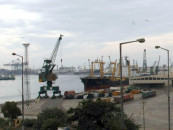Rs350m okayed for rice research
Rice production to increase with development of new seed varieties

Sindh Government has approved Rs350 million for the establishment of phytotron tunnels for speedy research and development in order to introduce new rice varieties within the shortest possible time.
Previously, it was taking six to eight years to introduce a new rice seed for commercial use, as per the statement of the Rice Exporters Association of Pakistan (REAP).
“This project will be a game changer in the agriculture sector, as it is also useful for all agricultural commodities,” said REAP Secretary Altaf Hussain Shaikh.
Officials of Sindh Agriculture Department have submitted the initial draft of the feasibility report (PC-1) with the planning department for sanction of funds for this project, he added.
Pakistan is one of the largest producers of rice in the world. It produces about 9 million tons of rice annually and exports about 6 million tons to various countries.
Pakistan has a large share in global rice exports alongside other commodities such as cotton and sugar. Pakistan’s production is more than that of other countries like Vietnam and Thailand.
Rice is the most important cereal crop in Pakistan and it is produced in different parts of the country, with Punjab being the main producer and Sindh being its biggest consumer.
Rice production in K-P has also risen over the years due to improved irrigation facilities as well as better rainfall patterns in some areas.
In Gilgit-Baltistan and Azad Kashmir, however, wheat is grown instead of rice or maize because this area does not have enough water storage facilities for growing either crop.
“We hope that after the establishment of these phytotron tunnels at Rice Research Institute Dokri, we will see a phenomenal increase in rice production, which will definitely help to increase rice exports to fetch much-needed foreign exchange,” he said.
Rice is the staple food of Pakistan and yet more than one-fifth of the population suffers from food insecurity. The main challenges in rice production are limited use of crop technology, lack of good quality seed and poor market information due to unreliable supplies.
The low production levels of rice are caused both by natural and man-made factors. Natural reasons include lack of space and water, as well as population pressure.
The man-made reason for low production is the complex seed selection process which is time-consuming. Also, rice requires very high maintenance costs to ensure good yield.
“We are very thankful to the government for its support, which is much needed,” said REAP ex-senior vice chairman Muhammad Raza. Sindh will be the first province to have this latest and advanced facility in its rice research centres, noted rice exporter Anis Majeed.
“We have been discussing with the government that all the seeds including that of rice are mostly imported. This is itself reflective of the lack of research and development on varieties of seeds,” said Sindh Abadgar Board Senior Vice President Mahmood Nawaz Shah.
Phytotron tunnels are facilities that produce new seeds in a controlled environment, he explained.
“It is commendable that these tunnels are being introduced. That said, research work also needs to continue with clear objectives and accountability to bring results, without which the tunnels alone may not help,” he added.
Published in The Express Tribune, August 23rd, 2022.
Like Business on Facebook, follow @TribuneBiz on Twitter to stay informed and join in the conversation.


















COMMENTS
Comments are moderated and generally will be posted if they are on-topic and not abusive.
For more information, please see our Comments FAQ